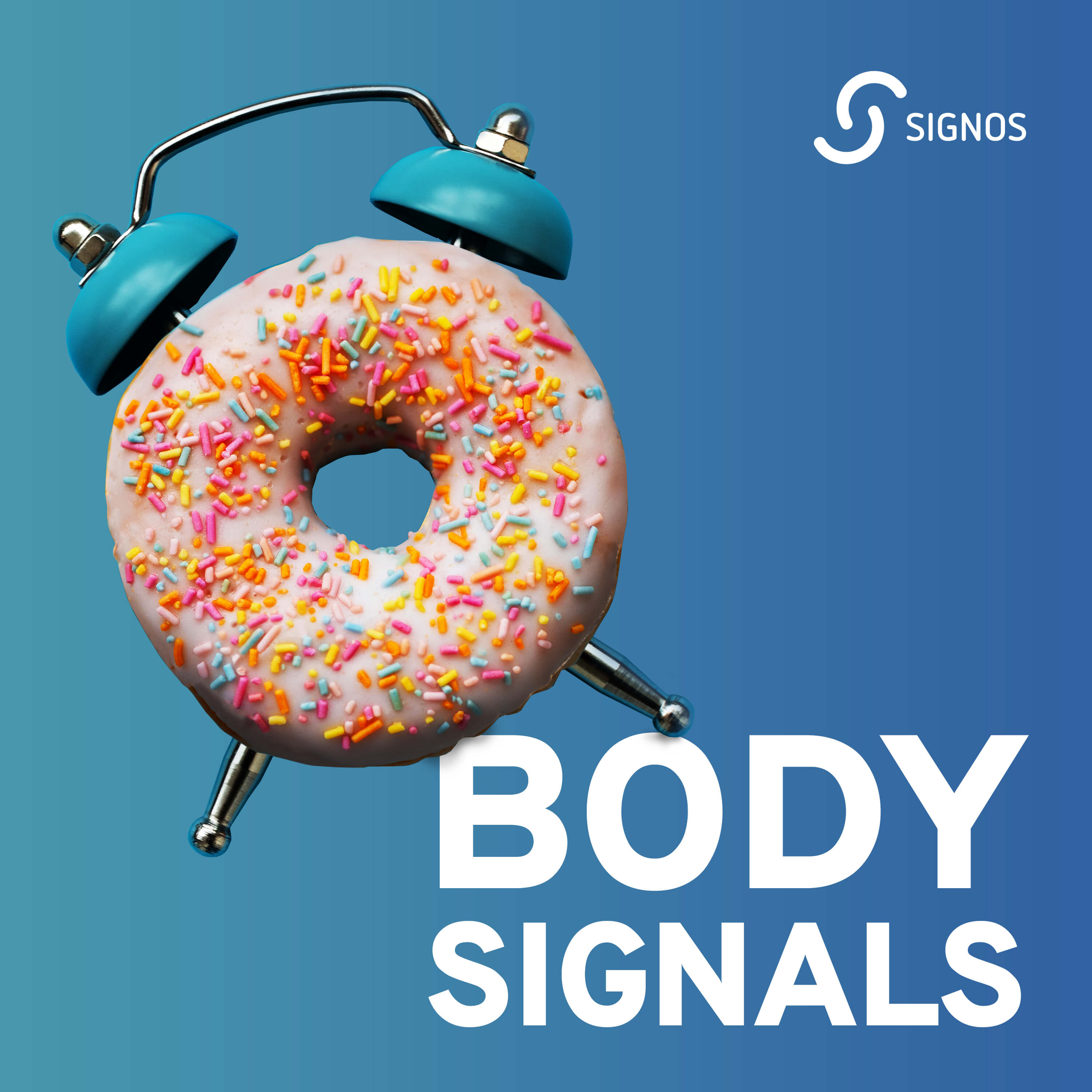A continuous glucose monitor (CGM) is a system designed to provide users with continuous blood glucose data. It is generally used by diabetes patients to better manage their blood glucose levels.
Are you curious about what CGM has to offer? Keep reading to learn how CGM works, its benefits, and who can use it.
Maintaining healthy blood glucose levels is crucial for health. In the case of metabolic diseases such as diabetes, it is even more crucial in preventing symptoms and serious health problems such as kidney failure and organ loss. To maintain target blood glucose levels, first, you need to know your blood glucose levels at a given time, which is possible with CGMs.
{{mid-cta}}
What Is a CGM?
CGM stands for Continuous Glucose Monitor, a medical wearable device inserted under the skin (commonly on the abdomen, upper arm, or upper buttocks) to measure glucose levels in the interstitial fluid (the fluid between your cells), providing a close approximation of blood glucose levels.
How Does a CGM Work?
A CGM comprises three key components: a small sensor, a transmitter, and a software program. The sensor utilizes tiny needles to measure glucose levels in the interstitial fluid (fluid between your cells). The glucose data is then transferred to the transmitter, which sends it to the software program.
CGMs may differ in how they store and present glucose data. They are generally categorized as ‘‘real-time CGMs’’ and ‘‘intermittent-scan CGMs.” Real-time CGMs automatically send glucose data to the receiver so you can see your glucose levels at a given time.
In contrast, intermittent-scan CGM systems do not provide continuous real-time glucose data. Instead, they require the user to manually scan a sensor or a glucose sensor patch with a dedicated device (such as a smartphone or receiver) to obtain glucose readings. These CGM readings are not continuous but are obtained at specific times when the user initiates a scan.
Intermittent-scan CGMs can be more cost-effective and less invasive than traditional CGMs, making them suitable for some individuals who do not require continuous glucose monitoring but want periodic access to their glucose levels. However, they may not provide the same level of detailed data as continuous monitoring systems.
Other determinants, such as sensor placement and replacement, can also change based on the CGM models you’re using.
Many CGM devices are available on the market, providing different features and capabilities. While specific CGM models may vary in design, compatibility with other smart devices, and additional functionalities, the fundamental principles of CGM technology remain consistent across most devices.
Who Can Use a CGM?

Diabetes care gets easier with CGM used by both people living with diabetes and the caregiver of a person with diabetes. CGMs are generally recommended for people living with diabetes, but they are also used by some athletes, those looking to lose weight, and people who are curious about their metabolic health.
Individuals with Diabetes
CGMs are generally used by individuals with diabetes to maintain target blood glucose levels. Effective blood glucose management is a crucial part of healthy living with diabetes. Maintaining target blood glucose levels can help prevent eye, heart, and kidney diseases, which are often secondary diseases stemming from unsuccessful blood glucose management.
A CGM can help manage diabetes by providing information about highs and lows in glucose levels and changes in glucose levels in response to a meal or certain activities (such as exercise and sleep).
Pregnant Women with Gestational Diabetes
In addition to adults with type 1 and 2 diabetes, a CGM can be immensely helpful for pregnant women with gestational diabetes, as healthy blood sugar levels are crucial for both the mother's and the baby's health.
Children with Diabetes
Continuous Glucose Monitoring (CGM) can be a valuable tool for caregivers of children with diabetes, providing them with more control and better insight into their child's blood glucose levels and overall diabetes management.
Athletes with Diabetes
Athletes with diabetes, whether they have type 1 or type 2 diabetes, may use CGM to monitor their blood sugar levels during exercise and adjust their insulin and nutrition accordingly without compromising health or performance.
People at Risk of Hypoglycemia
Individuals who are at risk of severe hypoglycemia (low blood sugar) unawareness, such as those with a history of severe hypoglycemic events, can benefit from CGM to receive alerts when their blood sugar levels drop to dangerous levels.
Those Seeking Better Diabetes Management
Even individuals with well-controlled diabetes can use CGM to fine-tune their management strategies, optimize their glucose levels, and reduce the risk of long-term complications.
According to the American Diabetes Association, CGM can make significant contributions to diabetes care. Although the association advocates for CGM coverage for all diabetes patients, not all patients can get CGM covered by their health insurance.
It’s best to consult your healthcare professional when considering using CGM. Your doctor will guide you by assessing your diabetes status, medication use, individual needs, lifestyle, etc.
Athletes
CGMs specifically designed for athletes are available. Athletes, particularly endurance athletes, use CGM to optimize nutrition and performance. Keep in mind that not all CGMs marketed to athletes can be used for diabetes. Therefore, if you're an athlete with diabetes, consider using a medical-grade CGM.
What Are The Benefits Of a CGM?

CGMs offer a level of glucose monitoring beyond conventional blood glucose monitoring methods. CGMs promise many benefits for diabetes patients, including improved glycemic control, reduced hypo- or hyperglycemia risk, and increased flexibility.
More Control Over Blood Glucose Levels
A CGM allows you to see changes in your glucose levels, enabling you to avoid hypoglycemia or hyperglycemia by taking preventive measures, which could include medication or insulin dosing, exercise, or adjustments in nutrition.
Fewer Finger Sticks
Diabetes patients commonly use a device to prick their finger (usually the fingertip) to obtain a small drop of blood for glucose readings from a blood glucose meter. However, the pain and discomfort of finger-prick can be discouraging for some patients. Patients can experience less pain and discomfort with a CGM, providing them with more peace of mind.
Immediate Notifications
CGMs can notify users of high and low blood sugar levels, allowing immediate action to improve blood glucose levels. Alerts can also be customized to an individual’s target glucose range.
Help Improve HbA1c
HbA1c (hemoglobin A1c/glycated hemoglobin) is a blood test that indicates average blood glucose levels over the past two to three months. The test reflects an individual's long-term blood sugar control. A CGM can improve HbA1c by facilitating better blood glucose management.
More Flexible Lifestyle
A CGM offers greater flexibility in dietary choices, exercise planning, and social life because users can manipulate blood glucose levels based on the data, enabling them to live the lifestyle they want without compromising their health.
What You Can Learn From CGM Data?
Glucose data provided by a CGM is extremely valuable for diabetes patients. It helps them in many ways, including preventing hypo- or hyperglycemia, reducing the risk of serious diseases that result from uncontrolled blood glucose levels, and optimizing nutrition and exercise for better blood glucose control.
Recognition of Your Glucose Patterns
CGM data enables you to identify recurring patterns in your glucose levels. For example, you may notice morning spikes or nighttime dips. If you recognize these patterns, you can take preventive measures to avoid spikes and dips, ultimately improving your overall blood glucose control.
Foods That Are Best for You
Managing blood glucose levels requires proper nutrition. A CGM simplifies this by informing users about which foods are best for them. It allows patients to see which foods cause spikes in their blood glucose levels and adjust and personalize their nutrition accordingly.
Be Mindful With Medication
A CGM provides your healthcare provider with more information about your response to treatment, allowing for more precise medication adjustments.
Additionally, other medications that diabetes patients use from time to time can affect blood glucose levels. A CGM helps you track glucose data using over-the-counter medications, vitamins, and supplements.
Adjust Your Exercise Program
Exercise timing and nutrition can be challenging for diabetes patients. A CGM can help patients use exercise to their advantage for better glucose management and a higher quality of life. Understanding how your blood glucose changes based on a specific exercise routine allows you to adjust your exercise regimen and nutrition accordingly.
Stress Management
Stress can trigger the release of certain hormones, such as cortisol, which can elevate blood sugar levels. A CGM can help you identify how stressors affect your glucose levels, allowing you to incorporate relaxation practices that work for you.
Learn More About a CGM with Signos
Do you wonder how a CGM can positively impact your health and well-being? Signos provides a continuous glucose monitoring system to help you manage your blood sugar levels effectively. It offers alerts when your blood glucose levels aren't in the desired range, personalized recommendations for nutrition and exercise, and the ability to track sleep, hydration, nutrition, and exercise—all of which are important components of blood glucose control. Discover how CGM improves blood glucose by endorsing suitable nutrition, exercise, weight, and stress management.
Explore how CGM accuracy surpasses traditional fingerstick tests by checking out Signos's blog, where valuable insights are presented by professional experts in the field of nutrition and diabetes.
Don’t forget to take a quick quiz to find out if Signos is the right choice for you.
- Item 1
- Item 2
- item 3
































